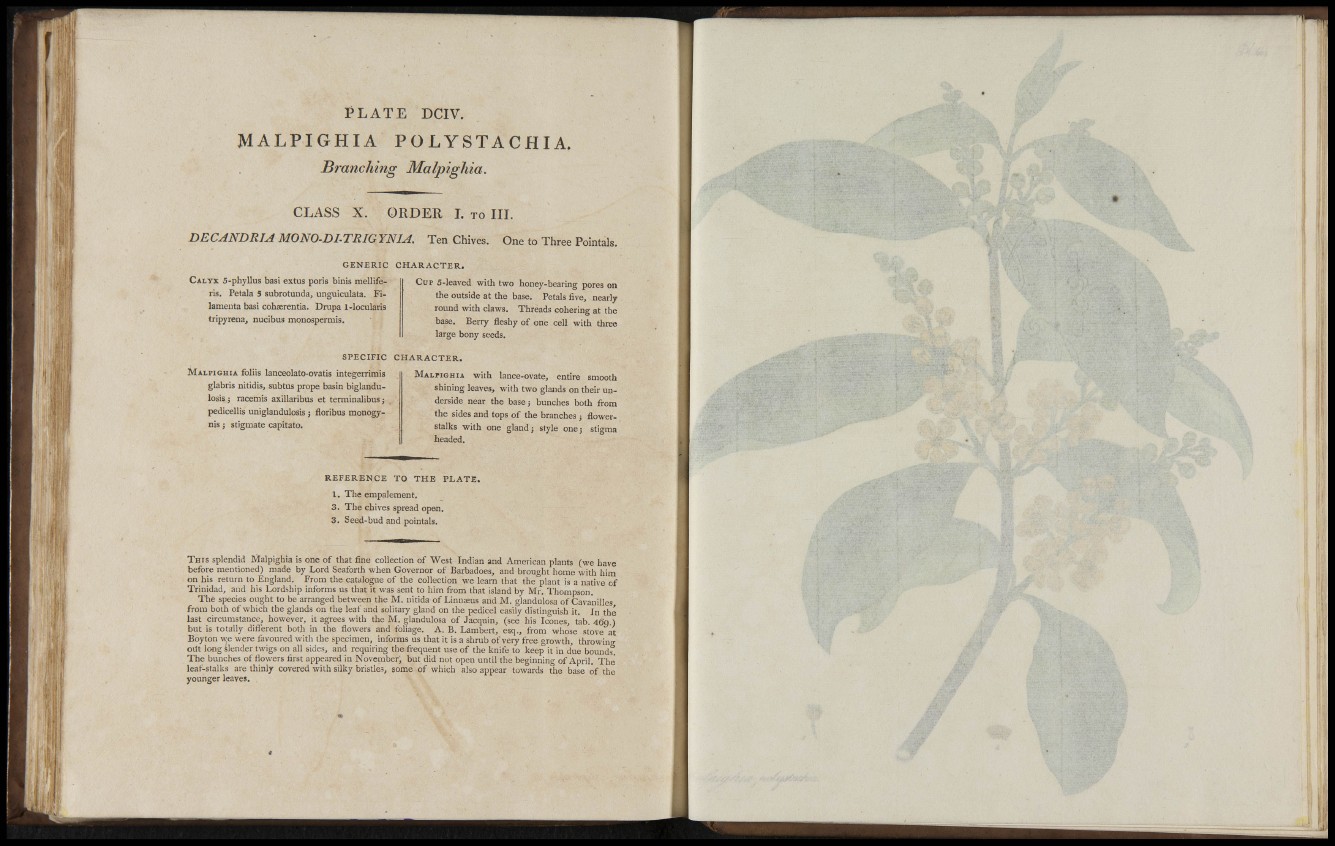
(
Ë
iji!
PLATE DCIV.
MALPIGHIA POLYSTACHIA.
Branching Malpighia.
CLASS X. ORDER L TO IIL
DECANDRIA MONO-Dl-TRIGYNIA. Ten Chives. One to Three Pointals.
GENERIC CHARACTER.
CALYX 5-phylIus basi extus poris binis melliferis.
Petala S subrotuiida, unguiculata. Filameuta
basi cohaerentia. Drupa l-locularis
tripyrenaj nuclbus monospeimis.
CUP 5-leaved with two honey-bearing pores on
the outside at the base. Petals five, nearlyround
with claws. Threads cohering at the
base. Berry fleshy of one cell with three
large bony seeds.
SPECIFIC CHARACTER.
MALPIGHIA foliis lanceolato-ovatis integerrimis
glabris nitidis, subtus prope basin biglandulosis
J racemis axillaribus et terminalibus ;
pedicellis uniglandulosis j floribus monogynis
; stigmate capitato.
MALPIGHIA with lance-ovate, entire smooth
shining leaves, with two glands on their underside
near the basej bunches both from
the sides and tops of the branches j flowerstalks
with one gland j style one; stigma
headed.
II- ' ,'
f
REFERENCE TO THE PLATE.
I . The empalement.
3 . The chives spread open.
3 . Seed-bud and pointals.
THIS splendid Malpighia is one of that fine collection of West Indian and American plants (we have
before mentioned) made by Lord Seaforth when Governor of Barbadoes, and brought home with him
on his return to England. From the catalogue of the collection we learn that the plant is a native of
Trinidad, and his Lordship informs us that it was sent to him from that island by Mr. Thompson.
The species ought to be arranged between the M. nitida of Linnoeus and M. glandulosa of Cava'nilles
f r om both of which the glands on the leaf and solitary gland on the pedicel easily distinguish it. Jn thé
last circumstance, however, it agrees witli the M. glandulosa of Jacquin, (see his Icones, tab. 46g.)
but is totally difierent both in the flowers and foliage. A. B. Lambert, esq., from whose stove at
Boyton w.e wer e favoured with the specimen, informs us that it is a shrub of veiy free growth, throwing
Gilt long ¿lender twigs on all sides, and requiring the frequent use of the knife to keep it in due bound^
The bunches of flowers first appeared in November, but did not open until the beginning of April. T'he
leaf-stalks are thinly covered with silky bristles, some of which also appear towards the base of the
younger leaves.